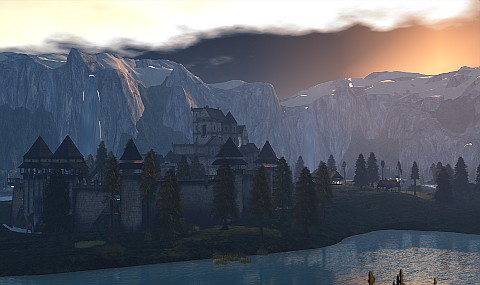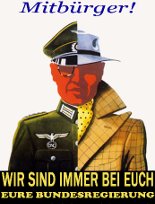Tharna
Nein, die wohlwollenden Leserinnen und geneigten Leser dürfen sich nicht beschweren, dass ich trotz der interessanten politischen Weltläufte etwas Sinnloses poste – das letzte Mal kam Gor hier am 14. Mai vor. Also bitte nicht jammern! Da müsst Ihr jetzt durch.
Da das deutsche Wikipedia das Thema „Gor“ für irrelevant ansieht, muss burks.de etwas publizieren. Immerhin ist John Norman zwar ein Trash-Schriftsteller, aber auch ein Bestseller-Autor mit Millionen-Auflage, dessen Bücher der Mainstream-Buchhandel in Deutschland wegen freiwilliger Selbstzensur weder führt noch liefert. Das muss man als Autor erst einmal hinkriegen. (Ich habe es selbst bei Dussmann – nur aus Neugier – in der fremdsprachigen Abteilung versucht – Fehlanzeige. Das nennt man dann vermutlich „freie“ Büchermarktwirtschaft.)
The City of Tharna [Der Screenshot oben zeigt die Secondlife-Sim Tharna – „adults only“] is the subject of the second of the Gor novels, Outlaw of Gor. Tarl Cabot has returned to Gor after seven years and found Ko-ro-ba to have been destroyed by the Priest-Kings. He then decides to journey to the Sardar to confront the Priest-Kings and stops in Tharna on the way. Tharna is located far to the northeast of Corcyrus and Venna. It is surrounded by many other cities. Tarl arrives in Tharna in 10116 C.A. and remains around there until 10117 C.A. When he finally leaves Tharna, it is a much changed city.
Tharna was once like any other Gorean city. But, over many generations, female dominance became the norm. Originally, the city had a certain Rite of Submission by which the men enslaved women. Part of the Rites involved binding the female captive with yellow cords and placing her on a scarlet rug. The color yellow symbolized talendars, a sign of feminimity and love. The color red symbolized blood and possibly passion as well. After that, the man would place a sword to the woman’s chest and utter the ritual phrases of enslavement. (…)
The city was ruled by a Tatrix, a queen. She wore a gold mask of a beautiful but cold face. Her Robes of Concealment were also gold in color. All women in the city wore similar masks though their masks were made of silver. The women of the High Council of the city would wear silver robes to match their masks. In 10113 C.A., Lara ascended the throne to become Tatrix. This was the year after their war with Thentis. Lara ruled Tharna when Tarl arrived in 10116 C.A. Her second in command was Dorna the Proud.
Tharna was known for providing hospitality to strangers unlike most other cities. Most cities view strangers as enemies. But, Tharna had a sinister motive for such hospitality. Anyone who remained in the city for more than ten hours could never leave. They would become slaves working in the fields or the mines. Despite its open door policy, the city is not very inviting once you enter its gates. The gates are made of black wood, bound with bands of steel and studded with brass plates. Two giant beams lock the gate, each beam so large that it takes a team of tharlarions or one hundred slaves to move it. The gates are only open during the day. (…)
Kommentare
Schreibe einen Kommentar



















